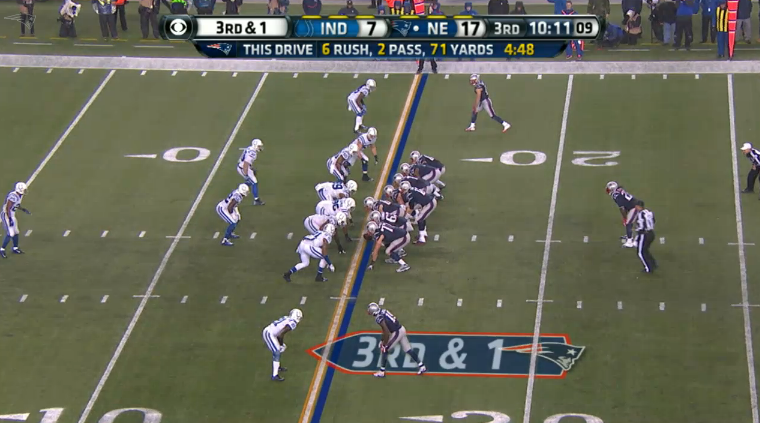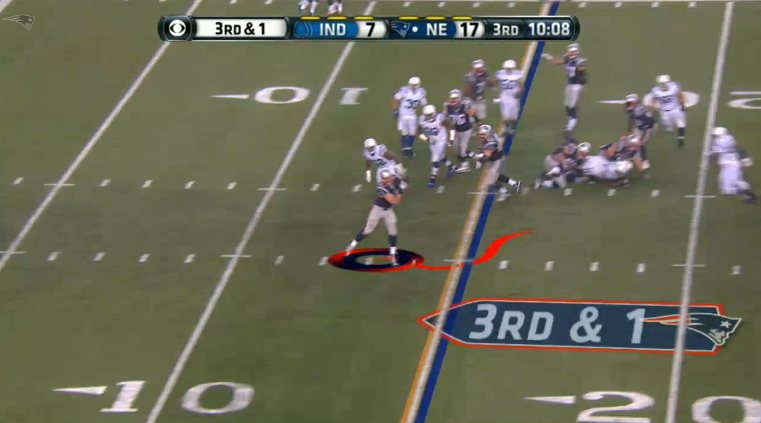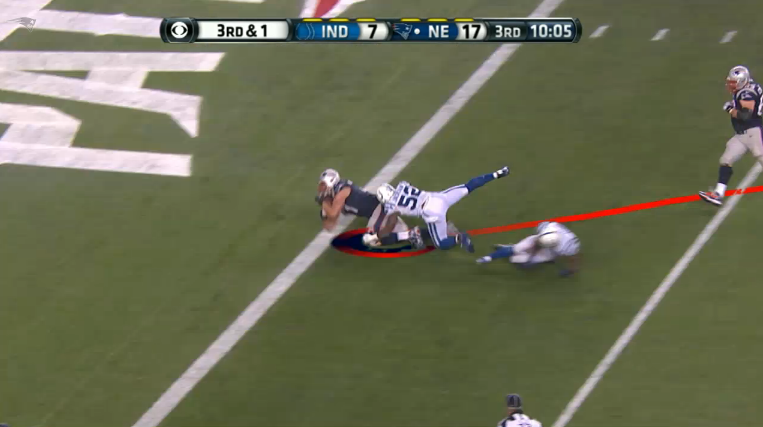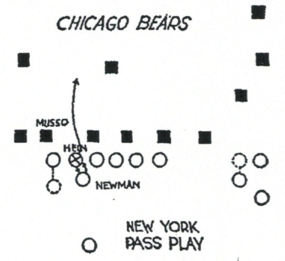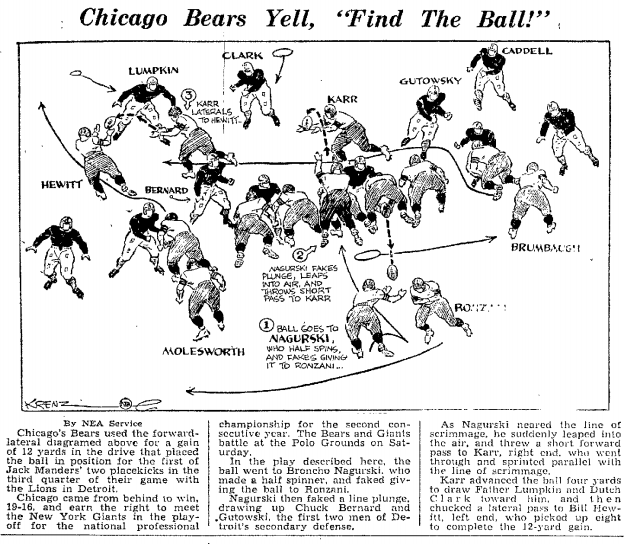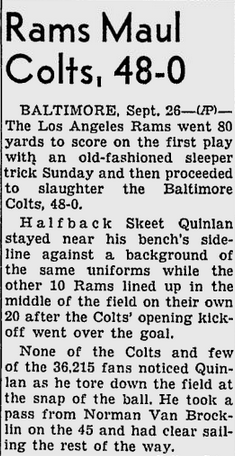There’ll probably be some discussion this Super Bowl Week — that is, when people tire of Deflategate — about the tackle-eligible play. Bill Belichick’s Patriots ran it twice for touchdowns in Super Bowls 38 and 39, and they used it again in the AFC title game, when Tom Brady flipped a 16-yard TD pass to an uncovered Nate Solder. The sequence went like this:
First, the Patriots lined up in an unbalanced line — four men to the right of center, two to the left. This made the 6-8, 320-pound Solder (77) the left end, because Brandon LaFell (bottom of the photo) positioned himself a yard behind the line as a flanker.
After the snap, Solder briefly blocked and then drifted into the flat, catching Brady’s throw at the Indianapolis 13. No Colt was near him.
A few giant steps later, he launched himself across the goal line to increase New England’s lead to 24-7.
One of the things that’s interesting about this play is that the NFL actually outlawed it in 1951. According to The Associated Press, it had become “a nightmare to officials because various clubs tried illegal variations which loosed tackles, centers and guards for pass receptions.”
The year before, Eagles coach Greasy Neale went nuts after the Cardinals ran one such variation against his team. The pass, in this instance, went to “an ineligible guard for about 30 yards,” AP reported. “And while the Eagles argued with the officials, Cardinal[s] coach Curly Lambeau lifted the guard from the lineup and covered him with a blanket on the bench. The officials couldn’t even find the player on the field who the Eagles contended caught the pass. The gain stood.”
The season before that, the Bears, goofing around in their season finale, ran five tackle-eligible plays against the Cardinals in a 52-21 win. Afterward, Cards coach Buddy Parker said, “The tackle eligible is a cheating play. It should be ruled out of football. I’m not saying this because we lost, but it’s my firm conviction it violates the spirit of football. I’m not blaming the Bears for using it. Other teams do. But there is no defense for it, and it is a difficult play for the officials to call.”
At the January 1951 league meetings in Chicago, the owners decided to get rid of “the old bugaboo tackle-eligible play,” as AP called it. But in recent decades it has worked its way back into the playbook — as long as the tackle reports as an eligible receiver, as Solder did. This alerts the officials, who then alert the defense. It’s still a trick play, it’s just not as tricky — or maybe shady — as it used to be.
In the old days, teams lined up in all kinds of bizarre formations to create Surprise Eligible Receivers. Check out this alignment the Giants sprang on the Bears in 1934, one that made the center, Hall of Famer Mel Hein, eligible:
Wilfrid Smith of the Chicago Tribune described it thusly:
The Giants shifted to a spread formation. Such a formation, with three eligible pass receivers [to] the right, always causes the defense to spread to meet a pass with secondary consideration for a run or plunge. The end men on the line of scrimmage and the backs are eligible to receive passes. Seven men must be on the offensive scrimmage line when the ball is passed by the center.
The Bears immediately dropped into a six-man defensive line and shifted three men to cover the Giants’ eligible receivers on the right side of the Giant[s] formation. Naturally, most of the fans watched these men, thinking a pass would be thrown to one of them. There was a Giant[s] end to the left of center Hein. Then, without warning, this end shifted one yard back from the line of scrimmage. This change made him a “back,” and to meet the rule specifying seven men on the line of scrimmage, a back shifted up to the line [indicated by the dotted line position].
As soon as one second had elapsed after this shift, another rule requirement, Hein passed the ball back between his legs to quarterback Harry Newman, directly behind him. Newman then handed the ball back to Hein, between Hein’s legs, and Hein ran with it, making 13 yards before he was downed by the Bears’ secondary.
When Newman handed the ball back to Hein it was a forward pass. Hein, the end man, was eligible to receive this pass and after receiving it to run.
George Musso, the Bears’ right tackle, had lined up approximately even with the Giants’ end, who later shifted into the backfield. Hein ran inside of Musso. The play was so unexpected that most of the Bears did not see the pass.
Maybe we’ll see a play like that in the Super Bowl. After all, the Patriots and Seahawks have shown plenty of creativity this season. Or maybe we’ll see a “Find the Ball!” play like the one the Bears ran against the Lions later in ’34. An artist’s rendering of it:
Now that would be fun.

